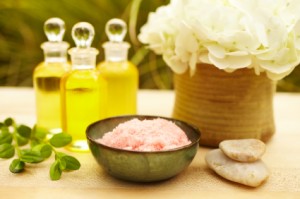Relieving Winter Dryness With Safflower Oil
November 29th, 2011 Dry skin feels itchy and uncomfortable and it only gets worse as winter progresses. You can relieve winter dryness with safflower oil. Safflower oil is a natural seed oil that penetrates deeply into the skin relieving dryness and protecting the skin’s natural moisture.
Dry skin feels itchy and uncomfortable and it only gets worse as winter progresses. You can relieve winter dryness with safflower oil. Safflower oil is a natural seed oil that penetrates deeply into the skin relieving dryness and protecting the skin’s natural moisture.
Safflower oil can be used alone or added to other skin care products. It has a very light odor, it feels light on the skin, and it stays liquid at low temperatures. These three assets make safflower oil an ideal carrier oil for skin care products, whether store-bought or home-made.
Massage oils, bath oils, moisturizing oils, skin creams and lotions all require a carrier oil. It is the base oil into which other ingredients can be mixed. Scented oils, waters, and concentrated skin-healing ingredients are added to the base oil to create finished products. In almost all cases, the base oil makes up most of the formula. That’s why you should pay close attention to the base oil in the products you use.
It is easy to be distracted by ingredients that are listed on a product’s label. Often, they are only present in tiny quantities, put there to raise the profile of the product, not its effectiveness. The base oils are what you are going to put on your body in large quantities, so it is important that they are pure and healthy. They will be listed at the beginning of the ingredients list.
The secret to the skin-moisturizing effects of safflower oil lies in its high linoleic acid content. This omega-6 fatty acid penetrates the skin for a deep moisturizing and soothing treatment. And the same essential fatty acid that makes safflower oil so good for the skin makes it a healthy dietary supplement too. Omega-6 fatty acids are an essential part of the human diet, and because we can’t produce them on our own, we have to get them from food sources.
Whenever possible, I only use products on my skin that are pure enough to eat (this doesn’t work with soap!). They are likely to be absorbed into my body anyway. Safflower oil definitely fits the bill.
Fortunately, organic safflower oil is not expensive. You can use it as a carrier oil or on its own as a topical skin treatment. Just rub it into dry areas and let it soak in for a few minutes. The skin is a big, thirsty organ. Chemicals and synthetic ingredients in skin care products can penetrate the skin and introduce toxins into the body. In contrast, natural oils like safflower oil bring goodness with them when they are absorbed, and that is why I use them for my skin care.
The best time to moisturize is right after a bath or shower. The skin absorbs water in the bath but it quickly evaporates as soon as you get out. Rubbing the skin with moisturizing oils or creams helps to lock water into the skin. Treatment with safflower oil, especially if it is blended with jojoba oil, is an effective, affordable way to relieve winter dryness.

